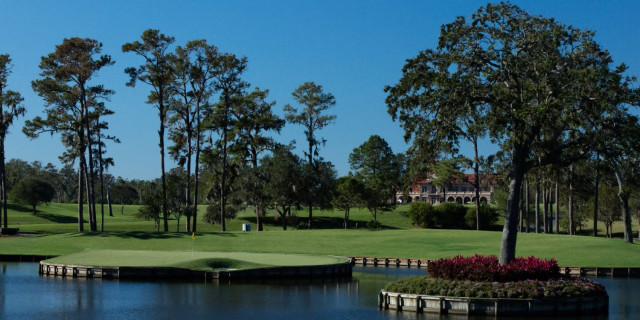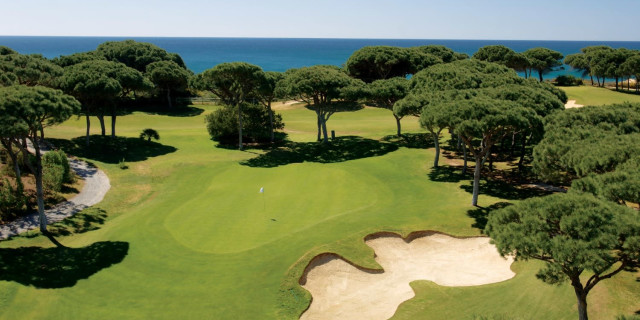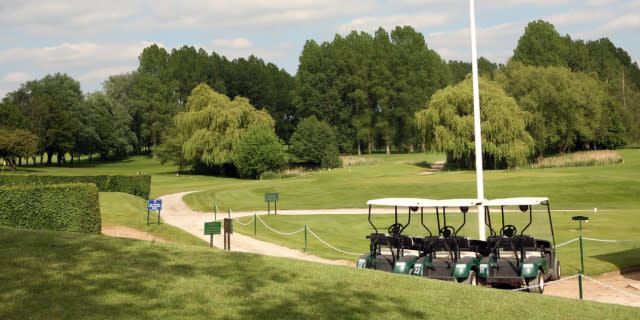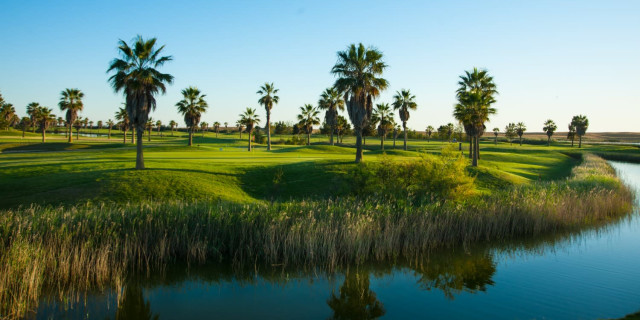Castlerock Golf Club Feature Review
Golfshake Ambassador Andrew Picken recently experienced the Causeway Tour in Northern Ireland, discovering many of the regional links that will be showcased when the Open Championship returns to Royal Portrush in 2019. Here is Andy's review of the striking Castlerock Golf Club.
Castlerock Golf Club is a classic links course set within intimidating dunes. The village is a seaside resort with glorious beaches, around five miles west of the town of Coleraine on the North Coast of Ireland. It is only a 20 minute drive from both Portstewart Golf Club and Royal Portrush Golf Club.
Founded in April 1901, the original course comprised of nine-holes and was laid out on the western part of the present course. Ben Sayers, the professional and club maker from North Berwick in Scotland, was commissioned to design an 18-hole layout.
Rated Highly Recommended on Golfshake
It is thought that the legendary architect Harry Colt was consulted regarding the redesign of the Castlerock links around 1930. This would be no surprise given its proximity to Royal Portrush. It is a fine links and its reputation in the game is reflected by the fact that it has hosted many National Championships in both the amateur and professional ranks.

The club features two courses, the 18-hole Mussenden and the nine-hole Bann. Both are picturesque and challenging. The Mussenden is close to a famous Temple of the same name and the shorter course overlooks the River Bann.
The clubs promotional video vividly depicts its appeal and classic links layout.
There is a newly constructed practice area that is well used. The club is clearly ambitious and has undergone course changes supported by Dr Martin Hawtree.
Key Holes (Front Nine)
1st, Knocklayde, Par 4, 367 Yards
The green is visible from the tee box however the tee shot should try and favour the left hand side of the fairway trying to avoid the out of bounds to the right. The swales and hollows just off the right of the fairway are also a considerable hazard in their own right.
2nd, Sconce, Par 4, 375 Yards
Not the longest par 4 but still a beauty. Effective placement for the tee shot is the key to playing this hole successfully.

4th, Leg O'Mutton, Par 3, 200 Yards
From the tee box this is a visually intimidating tee shot. The railway line frames the hole to the right and imposes itself upon the tee shot. The burn that runs diagonally across the fairway also has an impact. The green is well protected to all points of the compass. This is a lovely golf hole and par would be greedily accepted by most golfers.
5th, Railway, Par 5, 477 Yards
The ditches come into play for the badly pulled tee shot. They are more imposing due to the line of bunkers left that focus the mind towards the hazards. This is balanced by the out of bounds that forms the boundary of the course running parallel with the railway line. Again this is an intimidating tee shot from an elevated tee.
6th, Burn, Par 4, 347 Yards
Sensible strategic play is required to give a reasonable chance of playing par golf. A burn runs to the front of the green, bisecting the fairway. It looks worse than it is as a shot to the rear of the green gives more options for success as this provides the wider target area.
8th, Bulldozer, Par 4, 411 Yards
I found this a difficult hole to play in order to assess where to try and place the tee shot. The hole uses the natural topography and gradients and it fits beautifully into its surroundings. I tried to follow the natural shape of the hillocks and dunes but failed and as I found to my cost an offline shot is punished by the lie offered. No bunkers are needed to protect this green, mother nature does all the work.

Back Nine
12th, Spion Kop, Par 4, 430 Yards
I fully expected this hole to have much more of a steep incline thinking that it would be a link to the battle in the Second Boer War that occurred in January 1900. The course was formed in 1901. The reports of the battle from a reporter from the Manchester Guardian reverberated around the world as the British Empire was defeated by the Boer fighters. 1,700 empire troops were defeated by a much smaller foe. The Kop at Anfield, the home of Liverpool FC, has the same derivation.
The fairways have so many swales, hollows and humps that I don't think you could guarantee the perfect position on any given day. All appear to be naturally formed and I genuinely could not imagine a way of placing the ball perfectly off the tee box. In front of the tee box is a burn that runs across the fairway. The burn shouldn't impact upon the tee shot but it does impact visually from the tee.
15th, Homewards, Par 5, 518 Yards
An elevated tee provides a good view of all possible hazards. On either side the fairway slopes heavily right-to-left. The hole is straight but this offers its own difficulty as each shot has to be executed within tight parameters.
17th, Inishowen, Par 5, 493 Yards
The Inishowen Peninsula is a famous irish landmark found within the Causeway coast. The tee shot faces a slight dogleg to the groups of hazards, all are clearly in view .The bunkers look like they are much closer to each other than they actually are which adds to the intimidation factor.
There are two large swales that are visible from the tee, the fairway is framed by gorse and rough grasses. In the last few holes the course tightens up and becomes much more difficult. We were blessed with a beautiful autumn day with minimal wind but I would imagine that this is not the norm. This is a testing course on a good day I can only imagine how testing it would become when the wind blows
18th, Mussenden, Par 4, 357 Yards
This is a lovely looking golf hole sweeping up the gradient back towards the clubhouse. Again this follows the natural form of the land. The elevated club house with its panoramic expanses of glass add to the intimidation of the final hole.
The hole is shaped with a defined dog-leg left to right, no fairway bunkers. This piece of land doesn’t need them. Any shot off line will simply be punished by the quality (or difficulty) of the lie. This is just beautifully natural links golf and is a great climax to an excellent golf course.

I really enjoyed this experience at Castlerock Golf Club and would happily recommend a visit. In fact I will return as I learned so much from my first visit and I would like to improve on my scoring. To be immediately thinking of a return visit before the pint of Guinness has settled in the clubhouse is the best validation I can give to this venue. The food and welcome in the clubhouse is also superb.
Image Credit: Kevin Murray and Golfbreaks.com.
Related Content: review Northern Ireland Ireland course

















